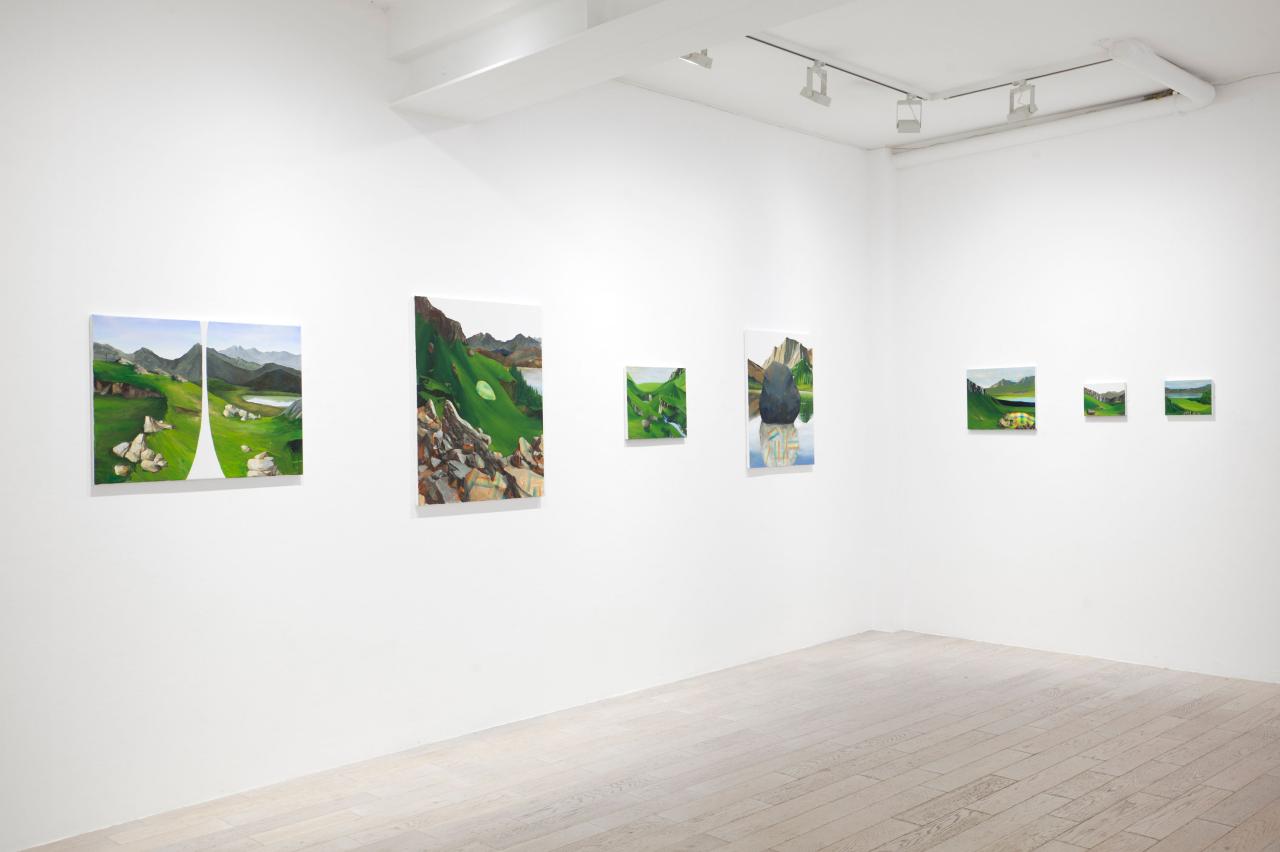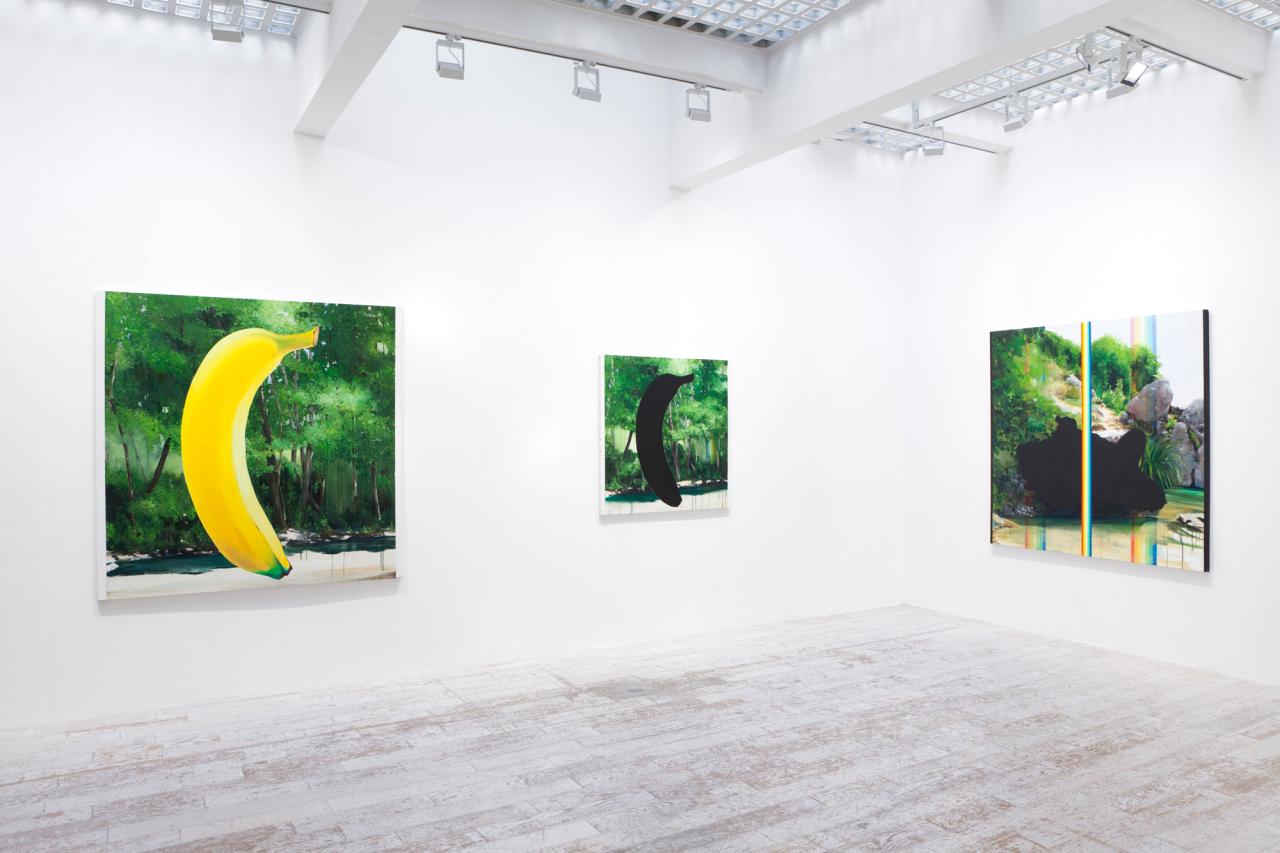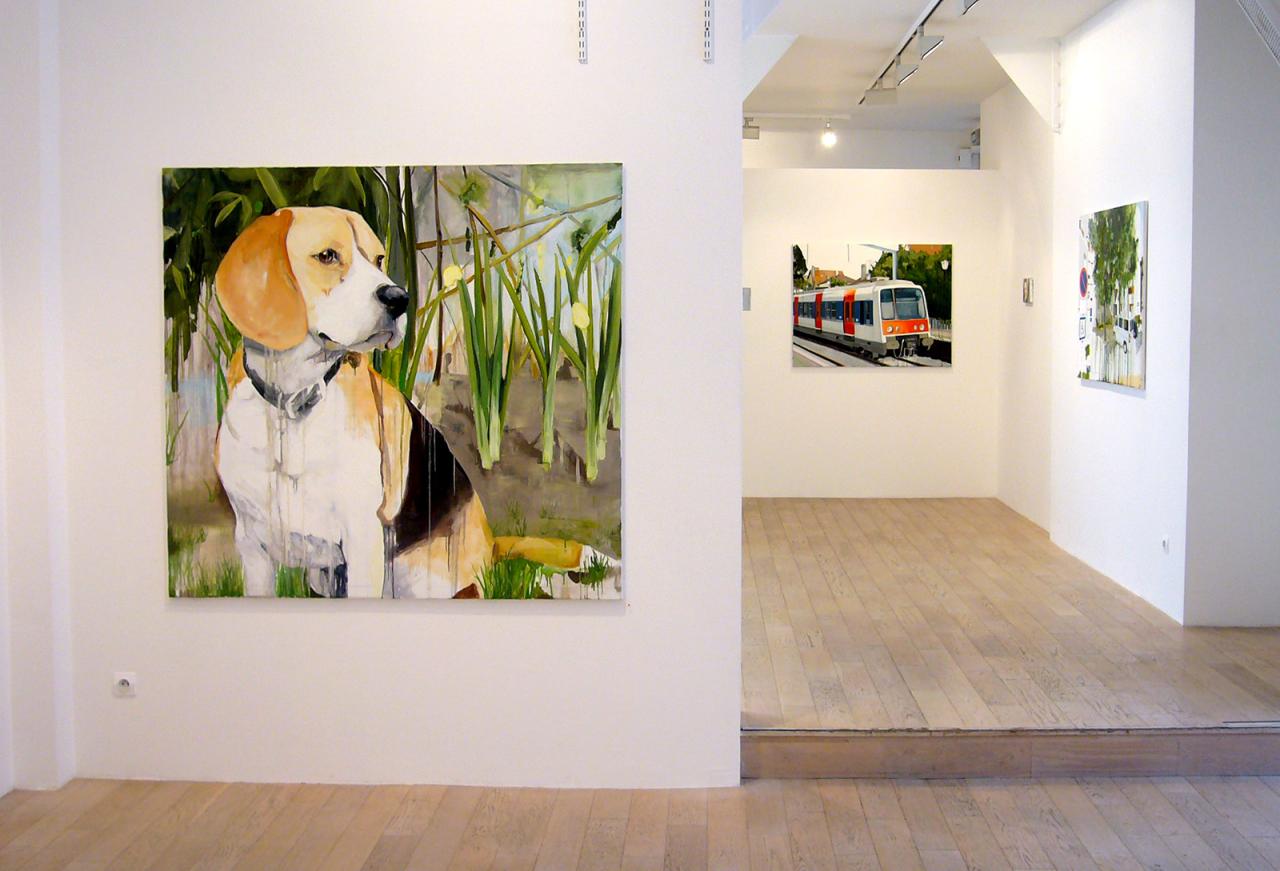David Lefebvre
Born in 1980
Lives and works in Grenoble



“Loose brushstrokes paint the reminiscence of a forest, interrupted by an indefinite, clear-cut shape. David Lefebvre’s painting is that of a dual world, balanced between figuration and abstraction, between smeared and geometric touches, between the visible and the invisible. The inception of his work finds inspiration in photographs that he finds online or, more recently, in his personal life history, onto which he applies a geometrical shape that delineates a coding area. This photographic alteration is converted to painting or drawing, from which characters in natural surroundings emerge, contrasting with a honeycombed stained-glass pattern that tends towards purely aesthetic visual simplicity. Although the setting and scene are clearly identifiable, David Lefebvre confuses us with these added coloured saturations. His dissatisfaction with realistic imagery leads the artist to paint the subconscious through the prism of polynomials in shades of red or bicoloured grids. While encoding was previously used to replace an element of reality, now the encryption has become absolutely indefinable. In his search for an invisible reality, the artist opens up a breach in the interpretation of the truth and creates an aperture in the figurative space of the picture in which to lodge the repressed object: affect and feelings. His paintings seek to describe something that is hidden elsewhere without ever showing it. Although figurative, David Lefebvre’s paintings flirt with abstraction, playing on the tangible ambiguity between what is visible or not, and the repressed desire that could all of a sudden manifest within the black blot in the middle of the forest path. The contrast between streaked painting and geometrical colour blocks enables the artist to explore the imperceptible and observe what is left of it.” […]
Excerpt from the article “(Dé)voiler le réel”, Charline Corubolo, Le Petit Bulletin No. 933.
Translated by Lucy Pons